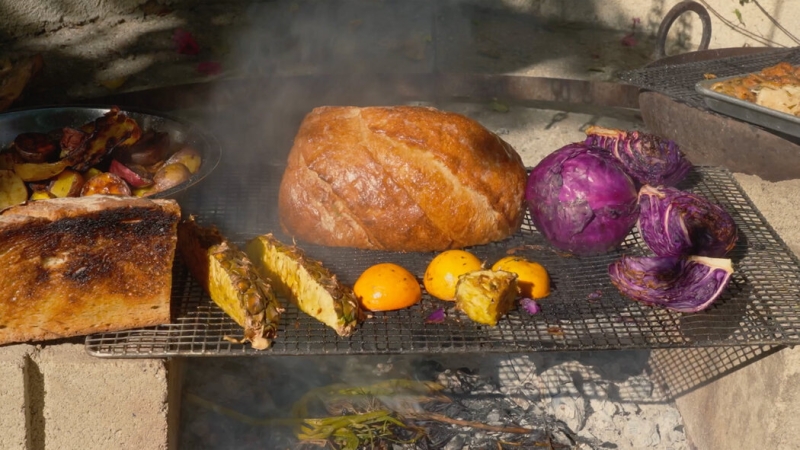Chefs from different global culinary traditions demonstrate how they do it — not a hamburger or hot dog in sight.
Video
Grilling is often associated with a certain brand of meat-centric, backyard machismo, but, really, cooking outside is for everyone — and has been since humans first applied flame to food, about 780,000 years ago. From the South American asado to the Indian tandoor, the fires are varied but often the process that surrounds them is communal. Some use raging heat, searing cuts of meat or a tangle of vegetables on a planchas or iron grate, while others smoke or braise low and slow in underground ovens, tank-style barbecues or kitted-out Green Eggs. Anything can be grilled: stone fruit, pizzas, parcels of banana-leaf-wrapped fish, bouncy cubes of mochi. It’s not air-fryer easy. Yet the effort is well worth it, say the three chefs who share their favored methods and recipes below. “There’s a romance to it — the smell of fish oil burning, mixed with wood smoke,” says the chef Jeffrey Ozawa. “It doesn’t get better than that.”
Video

T’s 2024 Summer Entertaining Issue is a guide to celebrating the season in less expected ways, featuring recipes and ideas from hosts with styles all their own.
– How a Death Doula Throws a Dinner Party: At the Baroque guesthouse she runs in Portugal, Rebecca Illing hosted old friends for a meal suffused with nostalgia.
– Lazy Susans Make Meals More Fun: Long overlooked as throwback novelties, spinning trays are making a comeback.
– An Easy, Beautiful Tomato Tart to Make All Summer Long: The chef Yann Nury updated his childhood favorite with cherry tomatoes and an olive oil crust.

Jeffrey Ozawa, Ozu, Santa Fe, N.M.
Ozawa, 36, loves the “uniquely social aspect of grilling,” he says, pointing out that “it’s something you can reasonably do both in front of and with guests.” He looked to his Japanese heritage as well as the time he spent cooking in South America and Los Angeles to come up with a style he can take from a camp stove to the front yard of his year-old Japanese restaurant, Ozu. The traditional Japanese grilling technique of robatayaki relies on binchotan, a nearly smokeless type of charcoal, to cook meat, fish and vegetables, often on skewers. Ozawa, however, prefers the “flavor of wood” and opts for local ingredients whenever possible so, instead of importing binchotan, he “searches Craigslist for people getting rid of fruit trees,” which then become his kindling. His dishes are similarly hybrid: He prefers Anaheim peppers to more typical Japanese shishitos and leaves his fish whole rather than partaking in what he calls “prep-intensive” skewering. His go-to marinade is shio koji, a deliciously funky-tasting, porridge-textured mix of fermented rice, salt and water that he applies liberally to chicken, grouper, bass, bream, salmon and scallops. “It has a creamy rich flavor to it, which complements fish with any sweetness,” Ozawa says, adding that while you can find it at Asian grocery stores, it’s “super simple and more economical” to mix at home.
Jeffrey Ozawa’s Shio Koji Marinade
Yield: approximately 1 ½ kilos
Ingredients
Method
Mix the koji, water and salt well, then put in a lidded container with the lid ajar and leave at room temperature. Fermentation will take one to 10 days; Ozawa’s sweet spot is eight days. The shio koji is ready when it has thickened slightly. To use, apply 10 percent shio koji marinade in relation to the weight of whatever meat or fish you plan on marinating. Pour generously over meat or fish and allow to marinate in the fridge for between one and five days. Wipe off excess marinade before cooking and take care when grilling: The shio koji will caramelize quickly and burn if left over high heat unattended. The yield of this recipe is enough to marinate 15 kilos of fish or meat; take care to seal and store in the fridge and it will last for months.
Thank you for your patience while we verify access.
